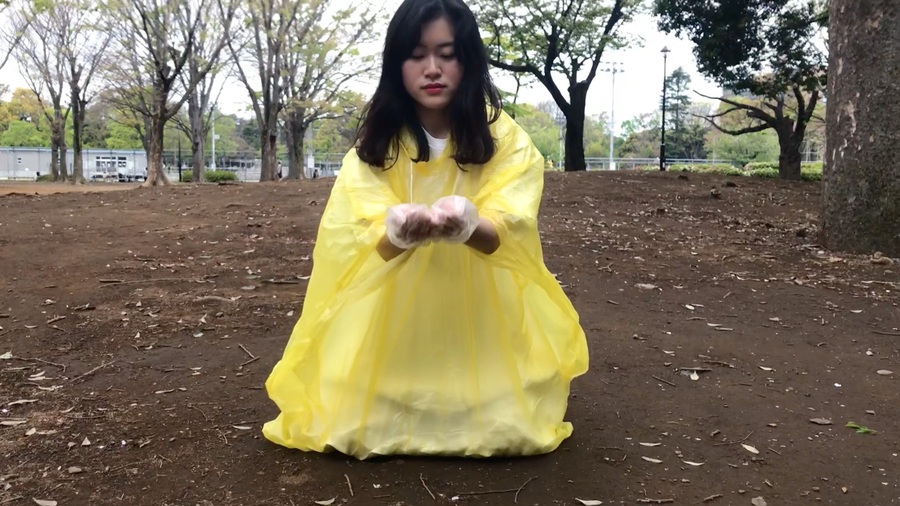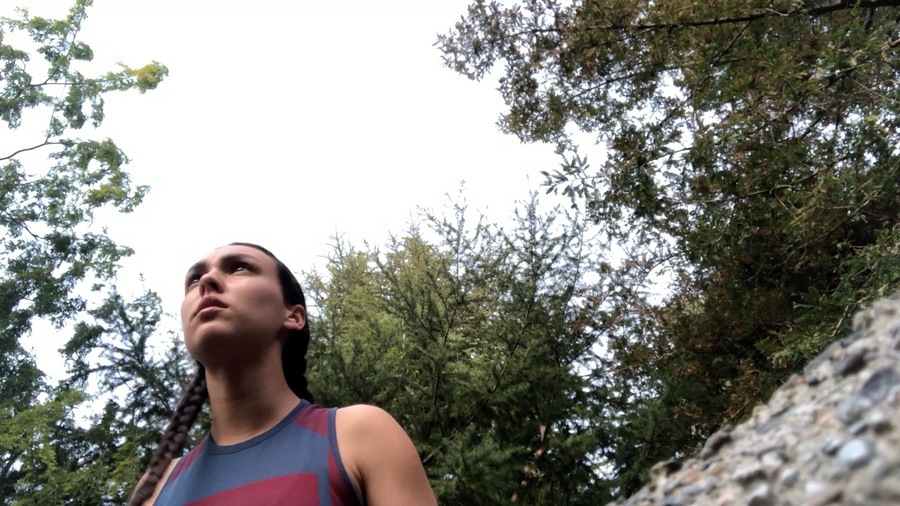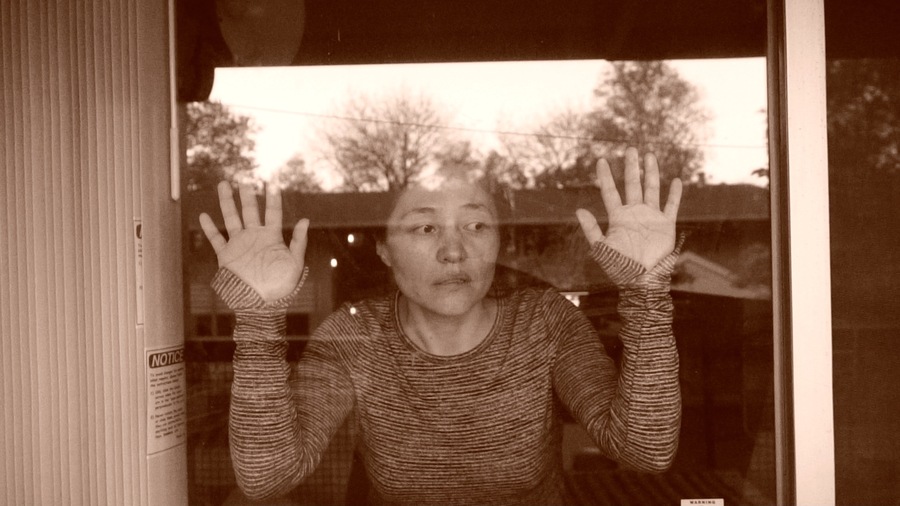This story is part of a package on the one-year anniversary of the COVID-19 lockdown.
AntigoneNOW was created in lockdown in April 2020. When the COVID-19 pandemic closed the theatres, the work’s co-directors, Margaret Laurena Kemp and Sinéad Rushe, radically reimagined their originally planned stage production at University of California, Davis as a 20-minute performance film that was rehearsed, directed, and created online. Devised from Sophocles’s play, Antigone, in a translation by Seamus Heaney, had a cast of 12 women—each in isolation, each playing Antigone—filming themselves on their mobile phones, iPads, and video cameras, to form a chorus portraying Antigone’s defiance of the law forbidding her to bury the body of her dead brother.
AntigoneNOW has screened at UC Davis, Cairo International Festival of Experimental Theatre, Northwestern University’s Wirtz Center for the Performing Arts, London School of Sound, Michael Chekhov Association USA, Valparaiso University, and SPE Media Festival.

I
MARGARET LAURENA KEMP: I refused to let the looming virus stop the production. I knew I had a method to create something based on previous work. I started to imagine, “What if the campus closes? What if the students go home? How could the production still happen?” The collaboration with Sinéad was still just imagined; we had never worked together and didn’t know each other well. I was determined to follow through: I have a thing about finishing work that I’ve started, so it became about gathering enough “yeses” to move forward. When Sinéad agreed, I knew there was a way.
SINÉAD RUSHE: When the borders from the U.K. to the U.S. closed in March 2020, I didn’t know what I was saying yes to exactly. I’d never made a film before. I was saying yes to directing Antigone from my desktop in London, to keeping a job contract when all the theatres were shutting down, to working with a cast that I would never actually meet in the flesh.
KEMP: I’d made films before, but not with the entire cast in quarantine, in four different countries, across five time zones, and with no filming equipment.
RUSHE: The pandemic thrust the form upon us: The actors would film themselves at home or wherever they were using whatever devices they had to hand.
II
KEMP: Before the pandemic, when we were working toward the live show, we were enthusiastic about how the language in the Seamus Heaney translation evoked the natural world: dust, earth, wind, birds, darkness, light. The natural world spoke to both our ways of seeing and making, to randomness and form.
RUSHE: In the switch to the digital format, these images became our linchpins. We compiled a shot list of simple pictures: washing hands, lighting a candle, shoveling dirt, or walking into the distance. They were a visual guide to the atmosphere of the play. We gave the list to the cast to shoot whenever and however they could. We also asked them to film certain parts of the script in a particular set-up with a precise set of actions, as well as inviting them to propose shots of their choice. It was both prescribed and freewheeling.
KEMP: Images from the shot list began to appear in their films in a completely expanded and localized way. Washing became a closeup of Regína Gutiérrez-Bermúdez vigorously washing clothes in her bathroom sink or lying in her bathtub fully clothed; walking into the distance became a sped-up Olivia Coca grabbing at the air and disappearing deep into a forest. The organic images in the shot list became a visual palette that the cast absorbed and inserted into their scenes. We began with the natural world of Sophocles’s Thebes and ended up with a kitchen sink in Sacramento.
RUSHE: Then there is the central image in the play of “that body lying out there, decomposing”: a dead body left to rot, forbidden to be touched, washed, buried, or mourned.
KEMP: For us, this emerged not only as the image in the play, but as the image of the pandemic.
RUSHE: An image expressing collective grief at losing the capacity to touch each other, to hold our loved ones’ hands in hospital and gather together for rituals of farewell.
KEMP: The film became a place to express our common experience of COVID-19. The entire cast would play Antigone in their different locations, reflecting the same suffering shared by so many across the globe.
RUSHE: The magnitude of Antigone’s grief couldn’t be contained by one woman; we fragmented it across multiple bodies of different ages and ethnicities in a compositional polyphony: Antigone as chorus, as a community in crisis.

III
RUSHE: Late in the play, Eurydice, Creon’s wife, enters. She comes to ask what has happened. It’s as if everything suddenly goes silent. She says so little, but brings an atmosphere and presence that’s unexpectedly domestic and startlingly realistic. The life experience of a mother who has lost a son and daughter-in-law—Antigone and her fiancé—just drops into that space. It’s so fleeting, but something of the pain of the entire play reverberates in that entrance.
KEMP: The way Sinéad described that moment to me stained my imagination.
RUSHE: There’s a polarity between the restrained misery of this mature woman and the explosive anguish of the young Antigone.
KEMP: I started to search for that sensation and draw it out, noticing the actual domestic space where the actors were filming. I extracted the sound of the water when Regína washes clothes in the sink and layered it over the moment when she stops washing. The bathroom is a very bare, everyday place where the stuff of ordinary life gets lived out. I sought to charge that scene with something of Eurydice’s unbearable heartache.
RUSHE: The feeling is intensified when Regína immerses herself fully clothed in the bathtub. It’s an image of birth and death: The bathtub is both a cot and a coffin. Regína is both Antigone and Eurydice evoking the litany of sorrow and oppression that generations of women have suffered.
KEMP: The actor’s real-life domestic environment became a poetic stimulus, an undressed “set,” a site of inspiration whose aesthetic neither Sinéad nor I controlled.
RUSHE: The result is a multiplicity of Antigones situated in real places that are unidentified and without continuity. She is everywhere yet nowhere in particular, an Antigone refracted across space in an undetermined—yet recognizable—geographical polyphony.
IV
RUSHE: Antigone seizes her own agency by speaking out against injustice and defending what she believes in. She teaches us about kinship and commitment.
KEMP: She demonstrates something important at a time when the institutions and systems we’ve relied on are failing many communities.
RUSHE: There’s nothing abstract or ideological about Antigone’s fidelity to her kin. She can’t exist if she doesn’t follow through on her principles. That, for her, is the meaning of life.
KEMP: Sinéad “showed up” online to co-direct a group of actors with whom she had no kinship. She had to rely on the trust they had in me, and they had to rely on my trust in her. The cast knew that, yet they believed that if we all bring the commitment, we can do something to transform this terrible experience. They had faith in a way of being with each other, listening to each other and engaging with imaginations that weren’t their own.
RUSHE: This carried through into the editing, where Margaret extracted the actors’ voices from their clips and used them to serve another’s performance. We took apart the voice, body, and atmosphere in each person’s clip and displaced them. Nothing belonged to anyone; one Antigone’s voice was accompanied by another Antigone’s body. The actors had complete control over their offer, but they had to relinquish their hold on the singularity of their vision.
KEMP: The process was further disjointed by the fact that in London, Sinéad was eight hours ahead of rehearsals and often not in the same flow.
RUSHE: We were all out of synch in more ways than one.
KEMP: Even our attempt at unison in the film failed: One of the opening shots—to establish that Antigone is multiple—is an ensemble movement sequence using the set-up of Zoom. Our aim was to record everyone live doing exactly the same thing (using the Twitch platform), but internet delays and glitches threw the synchronicity out.
RUSHE: The actors tried to move harmoniously together, but they were never actually in unison.
KEMP: Our rehearsal process was the opposite: We weren’t physically together, but we felt some sense of “togetherness” nonetheless.
RUSHE: We tried to use this digitally disembodied hinterland to find a collectively embodied “home base,” a new topography of collaboration that embraced lo-fi imperfection and polyphonic authorship. In this way, we somehow “landed” in the process and found our place.
Margaret Laurena Kemp (she/her) is an associate professor of theatre and dance at UC Davis as well as an actor, multi-disciplinary performing artist, writer, and teaching artist. Sinéad Rushe (she/her) is an interdisciplinary artist working as a director, performer, writer, mentor, and coach.


